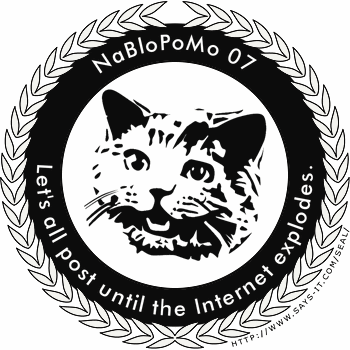I was sitting on the floor yesterday, watching Trombone play with a box of crayons. Actually, I was napping while he played with a box of crayons. Periodically he would pull one out of the box and yell, “Gurble!” and I would open my eyes and say, “That’s a RED crayon,” and then close my eyes again and he would quietly take a few minutes to put the crayon back in the box and pull out another one.
Hey, it was pissing rain and something resembling zero degrees outside and if we can’t amuse ourselves inside it is going to be a very long life until grade 1, I tell you what.
After a few iterations, I felt guilty so I got more creative. “That’s a BLUE crayon. The sky, Smurfs, blueberries and rotten cheese – those things are all blue. What’s a Smurf? Another time.” It was when I was describing orange, “Dyed cheese and apricots and pumpkins and, well, oranges…are all orange,” that I realized how weird it is that orange is both a noun and an adjective. Wouldn’t it be strange if we called bananas “yellows”?
I went to the Internet, expecting a long, arduous search because if I had never thought about this in 33 years of life, surely no one else would have. I am ashamed to report, though, that not only has most of the world already had this little brain wave but it’s a straight dope CLASSIC so, uh, yeah. I guess I’ve been busy? Thinking about other stuff?
The noun came first. Cecil (above) says the first utterance of “orange” as an adjective was recorded in 1620 but another site said it was in 1512 in the court of Henry VIII and this answer appeals more to my imagination. That same site says that, “Before [orange] was introduced to the English-speaking world, the colour was referred to (in Old English) as geoluhread, which translates into Modern English as yellow-red,” and I am inclined to believe this wholeheartedly as well.
Somewhat related:
I ate my first mandarin orange of the season (whoever’s season it is…) today. It was sublime.

